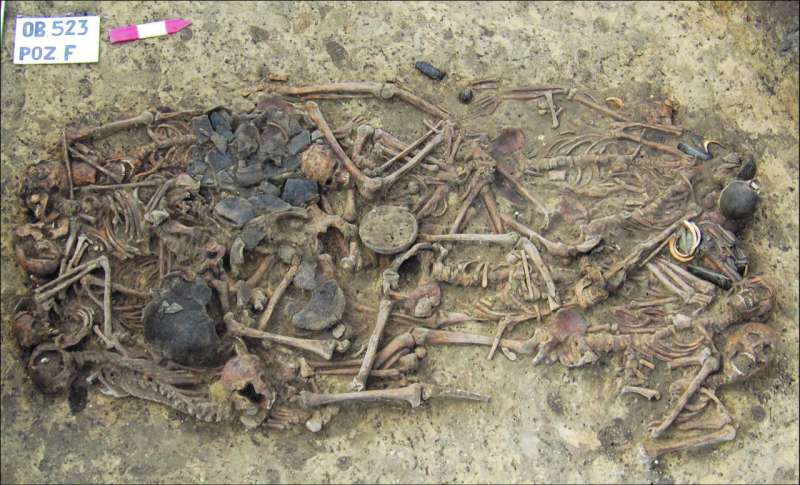May 7, 2019 report
Analysis of remains in ancient gravesite gives insight into Neolithic history in Poland

A large team of researchers from across Europe and the U.K. has learned more about Neolithic history in Poland by studying the remains of people buried in a mass grave in a southern part of the country. In their paper published in Proceedings of the National Academy of Sciences, the group describes the results of DNA testing they conducted on the remains and what they found.
Back in 2011, a mass grave was discovered near the southern Polish village of Koszyce. Prior research dated the remains to the Bronze Age. In this new effort, the researchers have conducted DNA testing on the remains of those found in the grave.
The researchers report that they found the remains of 15 people—men, women and children—all from approximately 2880 to 2776 BCE. Items found in the gravesite alongside the human remains suggested that the remains were from the Globular Amphora culture. They also found that the people all belonged to four core families. They noted that the adult females were not related to one another, suggesting that they had once belonged to another group. Of the eight men found in the gravesite, four were half-brothers and the others shared second-degree relationship links.
The researchers noted that a large proportion of older men seemed to be missing from the gravesite, suggesting they were away when a massacre occurred. The males in the grave were young, and only one of them had sired a child, which was also buried in the grave. In sharp contrast, the women were all mostly over 30 years of age, and four of them were mothers of children in the grave. The bodies were placed in the graves in significant ways, the researchers note, suggesting the men had returned, found their families dead and had buried them.
DNA testing also confirmed that all 15 of the dead belonged to the Sphere Amphora culture. The researchers theorize that people from the Corded Ware culture likely encountered the Sphere Amphora people as they sought to expand their range. They further speculate that the two groups were likely unknown to one another because there was no shared DNA in the victims.
More information: Unraveling ancestry, kinship, and violence in a Late Neolithic mass grave, Proceedings of the National Academy of Sciences (2019). www.pnas.org/cgi/doi/10.1073/pnas.1820210116
Journal information: Proceedings of the National Academy of Sciences
© 2019 Science X Network



















